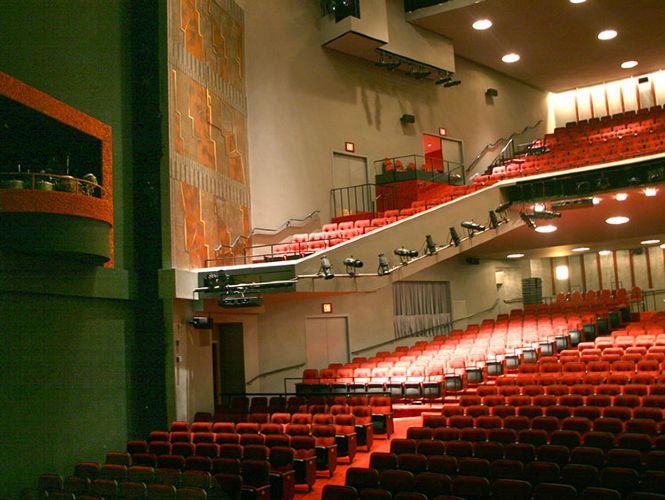Table of Content
Advantage of ability to remotely control automated door locks using a web-enabled device such as a smartphone, tablet, or PC has been increasing their utilization in recent years. Increasing investment by major players for development of advanced home security solutions to prevent burglary and theft is contributing to growth of the smart home technology market. Moreover, growing popularity of Artificial Intelligence assistants like Siri and Alexa are additional factors driving utilization of smart home technologies among consumers. The global smart home market size was estimated at USD 62.69 billion in 2021 and is expected to expand at a compound annual growth rate of 27.04% from 2022 to 2030.

The significant obstacle to market expansion is the rising cyberattack in high-end connected technology. Smart home technology faces the risk of security threats from all the connected endpoints. As intelligent technology is connected to every system and device in the home, hackers can gain confidential and personal information if it is not secured properly. According to Rambus Incorporated, a designer, developer and licenser of chip interface technologies, approximately 80% of IoT devices are vulnerable to a number of assaults.
♦ Recent Reports
The pandemic disrupted operational efficiency and affected the value chains due to the rash closure of international and national boundaries leading to damage and revenue loss. The existing smart products such as TVs and refrigerators remained popular as they aided the demand for entertainment and convenience of customers, who were forced to stay at home. The value chain had an unfavorable impact on the supply of raw materials, impacting the development of the smart home market. Additionally, in November 2018, Legrand acquired Netatmo, a French-based smart home company. Netatmo’s products will be integrated into Legrand's portfolio, which will allow the Group to increase its presence in this market and accelerate the development of Eliot, its connected solutions initiative.

The stock market bounced back in November, erasing some of the losses incurred earlier this year. The company reported substantial increases in users, bookings, and engaged hours, but revenue only rose 2%. The company reported lower bookings per active daily user, so it seems to be losing momentum with its user base. Additionally, rapid urbanization, change in lifestyle, surge in investments and increased consumer spending positively impact the smart home market. Our database includes 500,000+ market research reports from over 95 leading global publishers & in-depth market research studies of over 5000 micro markets.
North America Smart Home Market – Industry Trends and Forecast to 2029
The United States has been hit the worst in manufacturing, with China's production capacity falling by over 14% and worldwide electronic component sales falling by nearly 40%. The industrial industry, which accounts for roughly 17% of global GDP, is one of the worst-affected sectors during the COVID-19 epidemic. China is in the epicenter of the pandemic and the hub for most raw material suppliers who supply raw materials and components to a variety of manufacturing units around the world. This has had a direct influence on global FDI inflows, and as a result, some economies around the world have experienced significant declines. The worldwide standoff has stifled production at these plants, causing the entire supply chain to fall apart. Smart home devices are appropriate for a home setup in which devices may be operated remotely using a mobile or other networked device from any Internet-connected location in the world.
In addition to that, the report covers a thorough segmental analysis for each region comprising of market size and estimations for each segment by region for the years 2016–2028. In addition to that the report analyses Smart Home market at country-level hence the regional study is further bifurcated into key country-level markets from each region. North America is anticipated to dominate the global market during upcoming years. This is accredited to the presence of key market players combined with rising demand from the end-users. Some of the prominent country-level markets are the U.S., China, Germany, France, India, and Japan.
Smart Homes Market - Growth, Trends, COVID-19 Impact, and Forecasts (2022 -
It mainly provides services offered by the companies of home installation such as easy control and management of smart home devices with the help of smartphones. It also allows owners to control various systems such as lights, thermostats, doors, and entertainment using a central control hub or a device. Key factors that are driving the smart home platforms market growth include increasing adoption of smart home platforms and increasing usage of smart home platforms as they enable remote controlling of smart home functions. In Europe, market growth is being driven mostly by the expansion of small businesses and increased investment by major corporations in nations such as Germany, the U.K., France, and others. The increased need for smart security and monitoring systems in this region is fueling this growth. These factors will aid in the market's development, hence promoting the market's global expansion.

This will assist the users to be attentive and make informed decisions related to business. Businesses, homes, and government entities are actively purchasing and connecting such devices so the home smart devices number is quickly growing. This statistic helps explain exactly why companies throughout the world have directed significant resources for the research and development of IoT-enabled devices. And survey data, 57% of smart home device users in the US say they save time every day. The estimates in this report are based on periodic reports and CAGR projections, and they provide a comprehensive analysis of the market trends for the term Smart Home Energy Management Device. Section 7 includes information on the leading market players' backgrounds, product profiles, market performance , recent developments, SWOT analysis, and other factors.
Private Companies
As per the study, 80% of the U.S. were founded with smart home devices and one in four own a smart home device which thereBy increase the adoption of smart home services in this region. For smart container hardware, accuracy, and reliability of monitoring several applications are critical parameters. Among all the hardware components, sensors are the most used electronic components in smart containers. As several parameters are monitored in containers, the number of hardware components installed is large. Additionally, the cost of these devices is high, resulting in the hardware segment to hold the largest market share in the smart container market by offering. Smart home healthcare market from installation and repair service segment captured around 65% business share in 2022.
The alliance intends to match the rising trends of linked homes in Europe and to provide consumers more thorough and tailored smart home solutions. The two businesses will collaborate to market a wide range of smart home goods, including security and other gadgets as well as smart home devices. One smartphone app created by the Tuya platform can link and control all of these items.
Thus, the growth in IoT adoption will certainly help to boost the global market in the near future. Smart home devices are suitable for a home setup where devices can be automatically controlled distantly from any Internet-connected place in the world, using a mobile or other networked devices. A smart home has its devices connected through the Internet, and the customer can regulate functions, such as security access to the house, temperature, lighting, and home theater. Globally, the increasing importance of the need to counter security issues is anticipated to fuel the demand for smart and connected homes over the forecast period. Moreover, innovative wireless technologies, including security and access regulators, entertainment controls, and HVAC controllers, are expected to foster market growth.

Several methodologies and analyses are used in the research report to provide in-depth and accurate information about the Smart Home Market. Within the products criteria, the entertainment segment is expected to lead this market during the forecast period. In August 2021, during the 2021 CEDIA Expo, Schneider Electric planned to unveil the Square DTM X and XD Series linked wiring devices to the general public for the first time.
Once connected, IoT technology, a network of physical items that can collect and share electronic information, includes services like a smart security system, smart doorbell, and smart appliances. This is attributable to the increasing adoption of smart devices in the residential vertical to improve the standard of living. The wireless protocols segment is expected to grow at the highest CAGR over the forecast period of 2022 to 2030.
Additionally, the usage of smart home platforms enables remote controlling of smart home functions, which is another factor that drives the market. Significant growth has been observed due to the increasing demand for and usage of smart home platforms during the COVID-19 pandemic. The region is the largest exporter of food and beverage products, which has a high demand for smart container solutions during transit. North America witnesses some of the highest technology adoption rates, leading to the faster implementation of new technologies such as those offered by smart containers. The presence of key players, such as ORBCOMM Inc. , Phillips Connect , Sealand - A Maersk Company , and ZillionSource Technologies , creates growth opportunities for the market in the region.
Since information related to physical safety, healthcare, and personal information is digitally kept in the cloud, there is a considerable risk that hackers may exploit this data. A hacked monitor might give access to more personal information and data, which could then be utilized to harm a user or a household. The difficulty of providing consumers with privacy and confidentiality of their personal information is one of the biggest restraints hampering the market growth. Maintaining the secrecy of the data saved is important when controlling security services remotely. Furthermore, only one gadget may potentially re-infect every smart device in the house.

An extensive quantity of electricity is used by equipment like air conditioners, refrigerators, water heaters, lighting fixtures, as well as home entertainment systems. The homes are turning to energy-saving measures as a result of these higher expenditures. Smart home appliances that can communicate with each other have become an excellent option in such a situation. As a result, households are implementing smart home gadgets to reduce energy expenditures. Wireless communication technology developments is expected to enable remote control of residential equipment. When the owner is away from the house, some home automation systems sound an alarm, while other devices can notify the police or the fire department in the event of an emergency.





















